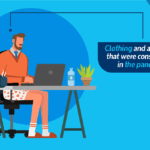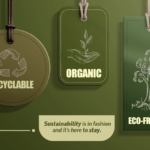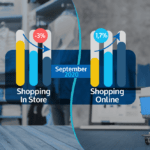It’s often hard to find an ideal fit when shopping, especially for plus size people whose clothes tend to lack in variety and style. This turns shopping into a frustrating and annoying task since these buyers are forced to purchase clothing that does not satisfy them completely.
These are some of the conclusions stated by a research group from Pontificia Universidad Católica in Peru. The researchers analyzed the design and commercialization of large-sized clothes made for adult women. Their findings, which are quite interesting, stem from focus groups and in-depth interviews, and could be harnessed to increase sales in stores and come up with new marketing strategies.
Limited offer, wider budget
The first unexpected insight is that full size women purchase two units of the same clothing item on occasions. When asked for the reason behind this, they argue that finding clothes that they like is really hard, meaning that the current offer is insufficient.
These women are also used to pay higher prices for larger sizes compared to regular ones. This leads to having to a wider budget than other clients.
Researchers also found that the staff behavior towards full size customers is not always positive. In stores, they tend to get negative or inappropriate comments from sale clerks. Topics such as body weight or having trouble finding adequate designs are commonly discussed.
Experts warn that salesperson should handle emotiveness and sustain a close relationship with the customer. This optimizes commercial and satisfaction-oriented goals. The store clerks should also have some knowledge about clothing manufacturing and production processes.
Considering preferences
“Larger sizes customers prefer brands that offer clothes tailored to their sizes”
The research not only asked full size clients about their shopping experiences. Many bloggers also commented about their followers express in social media. For instance, clothes made with synthetic fabrics are a better fit for larger silhouettes.
H&M and Forever21 are some of the most memorable brands in this market segment, given that their offer includes more products in larger sizes which is highly appreciated.
“An important drive for these users is that they are more loyal to a brand. Once they find a store with clothes of their liking, they will always come back and remember the brand”. Finally, bloggers insist that the market still has a growth margin in terms of the full-size clothing offer and the overall attention given to this segment.
Knowing body and brand
“60% of men and 40% of women cannot easily recognize their sizes”
Another research made by the technical and technological institution SENA (Colombia) found that the figures of customers are diverse. After measuring almost, a hundred volunteers, the researchers concluded that there are at least seven different shapes for women and five different ones for men.
An interesting takeaway is that each one of these shapes can have different clothing sizes. This would indicate that having trouble finding clothes that fit is more common than people would think and that it is not an issue exclusive to full-size customers. These results were revealed in the Colombian newspaper El Colombiano.
Another analysis from Instituto de Biomecánica de Valencia in Spain confirmed that 60% of men and 40% of women cannot easily recognize their sizes. This was determined after measuring 1.600 people from Mediterranean European countries (Spain, France and Italy). This analysis was published in the magazine Harper’s Bazaar.
“Since there is no universal size chart that sets a single standard, each brand can freely decide their sizing”, as explained by Professor Astrid Kasdorf from the European Institute di Design (IED) in Barcelona.
“It is important to know your own measurements, not while aiming for a false standard such as the old-fashioned 90-60-90 measurements of a supposedly perfect women, but instead, trying to understand the proportions of our body and knowing what works and what doesn’t. That is a process on its own”, as explained by designer Isabel Henao.
Technology can be helpful
“Cutting-edge technology can guide people to find clothes that are suitable for them”
Technology does not judge people. In contrast, the use of artificial intelligence can help users find their right size. Let us remember that technological progress can create a better customer experience.
For instance, VIPO technology can let customers interact with a screen within a store. It could help them look for clothes and accessories, using basic data such as a person’s height, weight, figure and style-based preferences. Far from making thoughtless comments regarding the customer’s appearance, this tool could become an alternative that is not distorted by the personal opinion of a salesperson, but instead supported by variables analyzed according to user needs.
Furthermore, the customers could receive additional fashion advice from the device to improve their overall experience making it an effective tool for both, shopper, and business.





